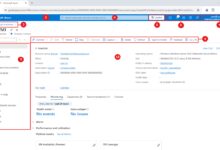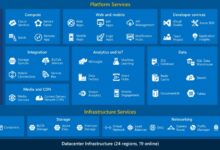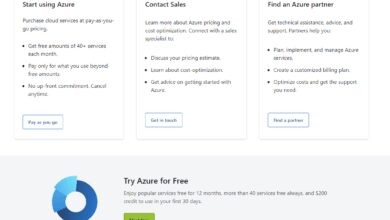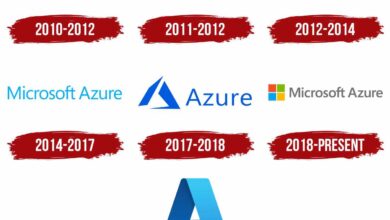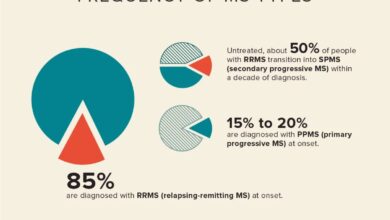Sign In to Azure Portal: 7 Ultimate Steps for Instant Access
Want to sign in to Azure portal quickly and securely? Whether you’re a cloud beginner or an IT pro, this guide walks you through every step with clarity and precision—no jargon, just results.
Sign In to Azure Portal: A Complete Overview

Microsoft Azure is one of the most powerful cloud platforms in the world, offering a vast array of services ranging from virtual machines and databases to AI and machine learning tools. At the heart of managing all these services lies the Azure portal—a web-based interface that allows users to control, monitor, and configure their cloud resources. To access this powerful dashboard, the first and most essential step is to sign in to Azure portal. This process might seem straightforward, but understanding the nuances ensures a smooth, secure, and efficient experience.
What Is the Azure Portal?
The Azure portal (portal.azure.com) is Microsoft’s unified console for managing Azure services. It provides a graphical user interface (GUI) that simplifies complex cloud operations. From deploying virtual networks to setting up security policies, everything can be managed through this centralized hub. The portal supports role-based access control (RBAC), resource tagging, cost analysis, and real-time monitoring—making it indispensable for cloud administrators and developers alike.
- It’s accessible from any modern web browser.
- Supports multi-factor authentication (MFA) for enhanced security.
- Offers customizable dashboards for personalized views.
Why Signing In Matters
Signing in to the Azure portal isn’t just about gaining access—it’s about identity verification. Every action taken in Azure is tied to a user identity, which determines what resources you can view, modify, or delete. Proper authentication ensures accountability, compliance, and security. Without securely signing in, you risk unauthorized access, data breaches, or accidental misconfigurations.
“Your identity is the new perimeter in cloud security.” — Microsoft Security Best Practices
How to Sign In to Azure Portal: Step-by-Step Guide
Now that we understand the importance of accessing the Azure portal, let’s walk through the actual process of how to sign in to Azure portal. This section breaks down each step clearly, ensuring even first-time users can navigate the login process without confusion.
Step 1: Navigate to the Official Azure Portal
Open your preferred web browser and go to https://portal.azure.com. Always ensure you’re on the legitimate Microsoft site to avoid phishing attacks. Bookmarking this URL is a smart practice for regular users.
- Avoid clicking on suspicious links from emails claiming to be from Microsoft.
- Check the SSL certificate (padlock icon) in the address bar.
- Use Microsoft’s official apps or trusted bookmarks.
Step 2: Enter Your Credentials
On the sign-in page, enter your email address or phone number associated with your Microsoft account or Azure Active Directory (Azure AD) account. This could be:
- A personal Microsoft account (e.g., @outlook.com, @hotmail.com).
- A work or school account provided by your organization (e.g., user@company.com).
- An Azure subscription account managed via Azure AD.
After entering your username, click “Next.” You’ll then be prompted to enter your password. Make sure your caps lock is off and that you’re using the correct keyboard layout.
Step 3: Complete Multi-Factor Authentication (If Enabled)
Many organizations enforce multi-factor authentication (MFA) as part of their security policy. If MFA is enabled, you’ll need to verify your identity using a second method after entering your password. Common verification methods include:
sign in to azure portal – Sign in to azure portal menjadi aspek penting yang dibahas di sini.
- Mobile app notification (e.g., Microsoft Authenticator).
- Text message (SMS) code.
- Phone call verification.
- Security key (FIDO2 compliant).
Follow the prompts to complete this step. Once verified, you’ll gain full access to the Azure portal dashboard.
Common Issues When Trying to Sign In to Azure Portal
Despite its reliability, users often encounter issues when attempting to sign in to Azure portal. These problems can stem from technical glitches, incorrect credentials, or security policies. Understanding common roadblocks helps you troubleshoot efficiently.
Forgot Password or Locked Account
One of the most frequent issues is forgetting your password or having your account locked due to multiple failed attempts. If this happens:
- Click “Forgot password?” on the sign-in screen.
- Follow the recovery steps using your recovery email or phone number.
- Reset your password and try logging in again.
For work or school accounts, contact your organization’s IT administrator if self-service password reset isn’t enabled.
Incorrect Tenant or Directory Selection
Azure supports multiple directories (tenants), especially in enterprise environments. If you’re part of several organizations or have multiple subscriptions, you might accidentally select the wrong directory during login. This can result in seeing no resources or getting access denied errors.
- After signing in, check the directory name in the top-right corner.
- Click your profile icon and switch directories if needed.
- Use the directory switcher tool within the portal.
To avoid confusion, always confirm which Azure AD tenant you’re logging into, especially if managing hybrid cloud setups.
Browser Compatibility and Cache Issues
Sometimes, the problem isn’t with your credentials but with your browser. Outdated browsers, disabled cookies, or corrupted cache can prevent successful authentication.
- Use supported browsers: Chrome, Edge, Firefox, or Safari.
- Clear browsing data (cookies, cache, site data).
- Try opening the portal in an incognito/private window.
- Disable browser extensions that may interfere with login scripts.
If issues persist, try accessing the portal from a different device or network.
Security Best Practices After You Sign In to Azure Portal
Successfully signing in to the Azure portal is only half the battle. Maintaining a secure session and protecting your cloud environment is equally critical. Here are key security practices to follow once you’ve sign in to Azure portal.
sign in to azure portal – Sign in to azure portal menjadi aspek penting yang dibahas di sini.
Enable Multi-Factor Authentication (MFA)
MFA adds an extra layer of protection by requiring two or more verification methods. Even if someone steals your password, they won’t be able to access your account without the second factor.
- Go to Azure Active Directory > Security > Multi-Factor Authentication.
- Enroll users and set up trusted devices.
- Configure conditional access policies to enforce MFA based on risk or location.
According to Microsoft, enabling MFA blocks over 99.9% of account compromise attacks.
Use Role-Based Access Control (RBAC)
Risk increases when users have more permissions than necessary. RBAC allows you to assign roles like Owner, Contributor, or Reader based on job responsibilities.
- Limit administrative privileges to only those who need them.
- Regularly audit role assignments.
- Use Azure Policy to enforce governance rules.
For example, a developer might only need Contributor access to a specific resource group, not full subscription control.
Monitor Sign-In Activity
Azure provides detailed logs of all authentication events through Azure Monitor and Azure AD Sign-In logs.
- Navigate to Azure AD > Monitoring > Sign-in logs.
- Filter by user, app, status, or IP address.
- Set up alerts for suspicious activities (e.g., logins from unusual locations).
Regular monitoring helps detect potential breaches early and supports compliance reporting.
Alternative Ways to Access Azure Resources Without Direct Portal Login
While the primary way to manage Azure is by signing in to the portal, there are alternative methods that offer flexibility, automation, and integration capabilities. These approaches are ideal for developers, DevOps teams, and automated workflows.
Azure CLI: Command-Line Power
The Azure Command-Line Interface (CLI) allows you to manage Azure resources using terminal commands. It’s lightweight, scriptable, and available across platforms (Windows, macOS, Linux).
- Install Azure CLI from Microsoft’s official documentation.
- Run
az loginto authenticate via browser. - Use commands like
az group createoraz vm listto manage resources.
This method is perfect for scripting repetitive tasks or integrating with CI/CD pipelines.
sign in to azure portal – Sign in to azure portal menjadi aspek penting yang dibahas di sini.
Azure PowerShell: Automation for Windows Admins
Azure PowerShell is a set of cmdlets that let you manage Azure services using PowerShell scripts. It’s particularly useful for Windows-based environments and enterprise automation.
- Install the Az module using
Install-Module -Name Az. - Run
Connect-AzAccountto sign in. - Automate deployments, backups, and monitoring with PowerShell scripts.
Like CLI, it supports service principal authentication for unattended scripts.
Azure REST APIs and SDKs
For advanced integrations, Azure exposes REST APIs that allow applications to interact directly with Azure services. SDKs are available for popular languages like Python, Java, Node.js, and .NET.
- Authenticate using OAuth 2.0 tokens.
- Call endpoints to create, read, update, or delete resources.
- Build custom dashboards or integrate Azure into third-party apps.
This approach offers maximum control and is used heavily in cloud-native application development.
Managing Multiple Subscriptions When You Sign In to Azure Portal
Many users, especially in large organizations or consulting firms, manage multiple Azure subscriptions. Knowing how to navigate between them is crucial for effective resource management after you sign in to Azure portal.
Understanding Azure Subscriptions and Tenants
An Azure subscription is a billing and administrative boundary for Azure resources. A single Azure AD tenant can have multiple subscriptions, and a user can have access to multiple tenants.
- Each subscription has its own set of resources, policies, and spending limits.
- Tenants represent organizational boundaries and identity stores.
- Users are authenticated at the tenant level but authorized at the subscription level.
For example, a company might have separate subscriptions for production, development, and testing environments—all under one Azure AD tenant.
Switching Between Subscriptions
After signing in, you land in a default subscription. To switch:
- In the Azure portal, click the subscription filter at the top.
- Select the desired subscription from the dropdown list.
- All subsequent actions will apply to the selected subscription.
You can also pin frequently used subscriptions for quick access.
sign in to azure portal – Sign in to azure portal menjadi aspek penting yang dibahas di sini.
Setting Default Subscription in CLI and PowerShell
When using command-line tools, you can set a default subscription to avoid specifying it in every command.
- In Azure CLI:
az account set --subscription "Subscription-Name" - In PowerShell:
Select-AzSubscription -SubscriptionName "Subscription-Name" - Verify with
az account showorGet-AzContext
This streamlines automation and reduces errors in multi-subscription environments.
Advanced Tips for Power Users After Signing In to Azure Portal
Once you’ve mastered the basics of how to sign in to Azure portal, it’s time to level up. These advanced tips help optimize your workflow, improve visibility, and enhance productivity.
Customize Your Dashboard
The Azure portal dashboard is fully customizable. You can create personalized views with tiles showing key metrics, resource statuses, and cost trends.
- Add, resize, or remove tiles based on your needs.
- Pin virtual machines, storage accounts, or cost analysis widgets.
- Save multiple dashboards for different roles (e.g., DevOps, Finance, Security).
For example, a cloud architect might have a dashboard focused on network performance, while a billing manager tracks spending and quotas.
Use Azure Cloud Shell
Azure Cloud Shell is a browser-based shell environment that gives you instant access to Azure CLI and PowerShell without installing anything.
- Access it directly from the portal toolbar (click the >_ icon).
- It runs in your browser and persists your files via Azure Storage.
- Perfect for quick troubleshooting or executing ad-hoc commands.
Cloud Shell integrates seamlessly with your current session, so you don’t need to re-authenticate.
Leverage Quickstart Templates and Marketplace
Instead of building resources from scratch, use Azure Quickstart Templates or the Azure Marketplace to deploy pre-configured solutions.
- Browse templates on Azure Quickstart Templates.
- Deploy common architectures like WordPress, Jenkins, or Kubernetes clusters with one click.
- Save time and reduce configuration errors.
These tools are invaluable for rapid prototyping and consistent deployments.
sign in to azure portal – Sign in to azure portal menjadi aspek penting yang dibahas di sini.
How do I sign in to Azure portal with a work account?
To sign in with a work or school account, go to portal.azure.com, enter your organizational email (e.g., user@company.com), and input your corporate password. If multi-factor authentication is enabled, complete the verification step using your registered method (app, SMS, etc.).
What should I do if I can’t sign in to Azure portal?
If you’re unable to sign in, first verify your internet connection and browser compatibility. Clear your cache, try a private window, or use another device. If the issue persists, reset your password via the “Forgot password?” link or contact your Azure administrator for assistance.
Can I access Azure without using the portal?
Yes, you can manage Azure resources without the portal using Azure CLI, Azure PowerShell, REST APIs, or SDKs. These tools are ideal for automation, scripting, and integration into development workflows.
Is it safe to sign in to Azure portal on public Wi-Fi?
It’s not recommended to sign in to Azure portal on public Wi-Fi due to security risks. If necessary, use a trusted virtual private network (VPN) and ensure your device is protected with up-to-date antivirus software.
How do I switch between Azure directories after signing in?
sign in to azure portal – Sign in to azure portal menjadi aspek penting yang dibahas di sini.
After signing in, click your profile icon in the top-right corner of the Azure portal. From the dropdown menu, select “Switch directory” and choose the desired Azure AD tenant from the list.
Signing in to Azure portal is the gateway to unlocking the full potential of Microsoft’s cloud platform. From initial authentication to advanced management techniques, understanding this process empowers you to securely and efficiently control your cloud resources. Whether you’re a beginner or an expert, following best practices—like enabling MFA, using RBAC, and leveraging automation tools—ensures a robust and scalable cloud experience. By mastering the steps outlined in this guide, you’re well-equipped to navigate Azure with confidence and precision.
Recommended for you 👇
Further Reading:
